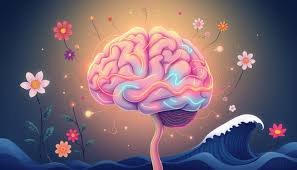
The Role of Neuroplasticity in Traumatic Brain Injury Healing
Traumatic brain injuries affect many people, disrupting their lives and creating challenges for recovery. Healing from a brain injury requires time, effort, and an understanding of how the brain adapts and rebuilds itself. Neuroplasticity, a process fundamental to the brain’s recovery, plays a role in helping those suffering from a head injury regain function and independence.
What Is Neuroplasticity?
Neuroplasticity is the brain’s natural ability to reorganize and form new neural connections. It is a continuous process that occurs throughout life, not just during early development or under specific conditions. It plays a key role in the brain’s ability to adapt, learn, and recover from injury.
The process of neuroplasticity involves both structural and functional changes in the brain. Structurally, this includes forming new neurons and neural pathways. Functionally, it means the brain adjusts how existing networks communicate and process information.
The concept of neuroplasticity forms the foundation of many rehabilitation techniques and therapies designed to restore lost functions after a traumatic head injury. By harnessing neuroplasticity, individuals can regain skills and improve their quality of life.
What Are Types of Brain Injuries?
Traumatic brain injuries (TBIs) vary in severity and require individualized recovery approaches. Concussions, the most common type, are often caused by blows to the head and can lead to symptoms such as headaches, dizziness, and difficulty concentrating. Recovery typically involves rest and gradually returning to normal activities under medical guidance. Contusions, which involve localized bleeding or bruising in the brain tissue, often result from falls, accidents, or direct impacts. Treatment focuses on rehabilitation therapies to improve movement, speech, or memory.
More severe TBIs, like those caused by penetrating injuries, can result in widespread damage and require comprehensive recovery programs. These often include surgical interventions, intensive therapy, and strategies that leverage neuroplasticity to regain lost function. Emotional and physical support is integral in helping patients navigate the challenges of recovery and adapt to changes in their abilities.
The recovery journey for TBIs differs for each individual, influenced by factors such as age, injury severity, and access to healthcare. Professional guidance plays a role in providing tailored care and maximizing recovery outcomes. With the right support, many individuals can regain functionality and improve their quality of life over time.
How Does Neuroplasticity Help in Head Injury Recovery?
Neuroplasticity plays a key role in the brain’s recovery following a TBI. When an injury damages certain areas of the brain, other regions may compensate by adopting new roles. This adaptability helps individuals relearn tasks such as speaking, walking, or writing.
Neuroplasticity, often described as the brain’s remarkable ability to reorganize itself, is a fundamental basis for learning and recovery after injuries. It allows the brain to adapt functions by forming new neural connections in response to injuries, environmental changes, or learning experiences. This adaptability means that even areas of the brain that were previously inactive or damaged can take on new roles, compensating for lost functions.
Activities such as mindfulness practices, consistent learning, and physical exercise are powerful ways to engage and enhance neuroplasticity. These approaches not only support recovery but also contribute to improved cognitive health over time. Incorporating these habits into daily life can lead to long-term mental resilience and adaptability.
Rebuilding Hope Through Understanding
Neuroplasticity provides a pathway for healing and hope for TBI survivors. By helping the brain adapt and grow, it enables individuals to regain lost abilities over time. If you have experienced a head injury, exploring options like therapy and structured rehabilitation programs can support your recovery. Consult with healthcare professionals to discover strategies tailored to your specific needs and goals. Through patience and persistence, recovery is within reach.
